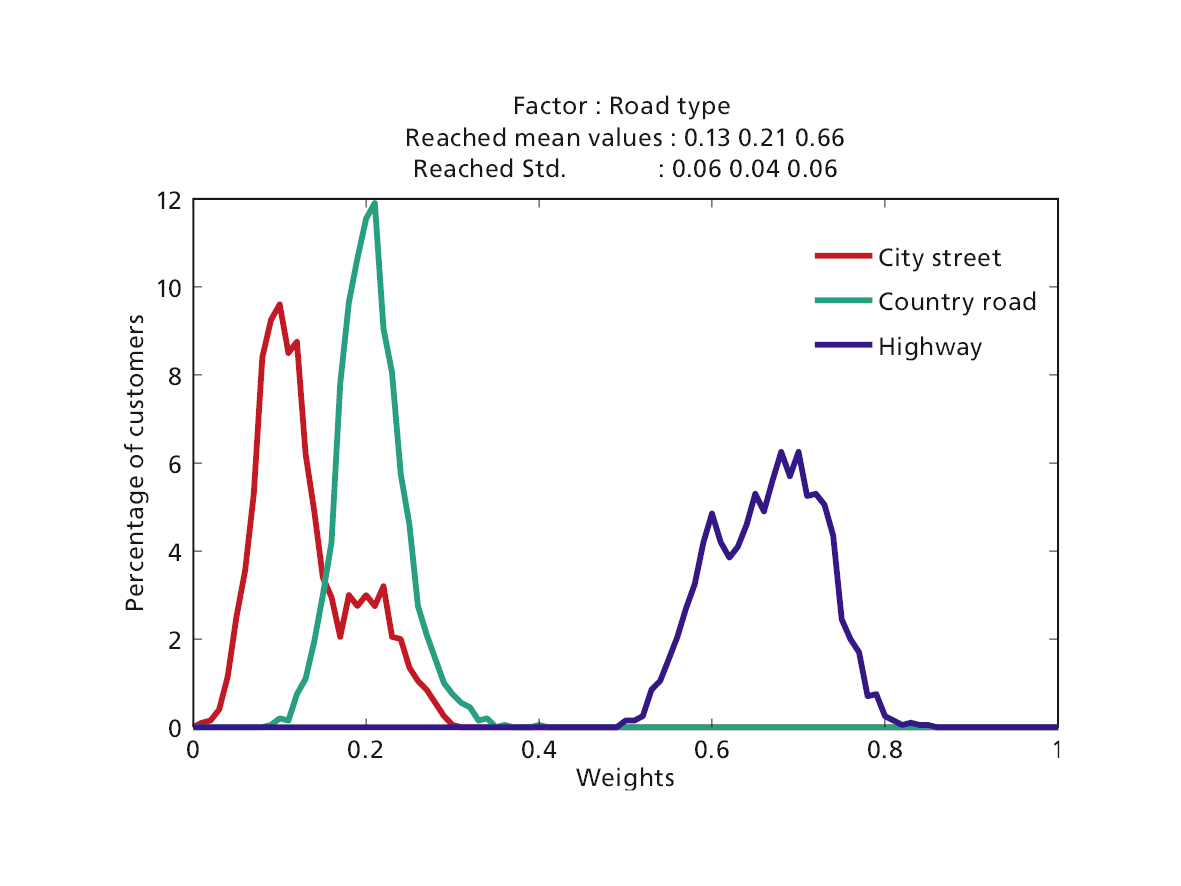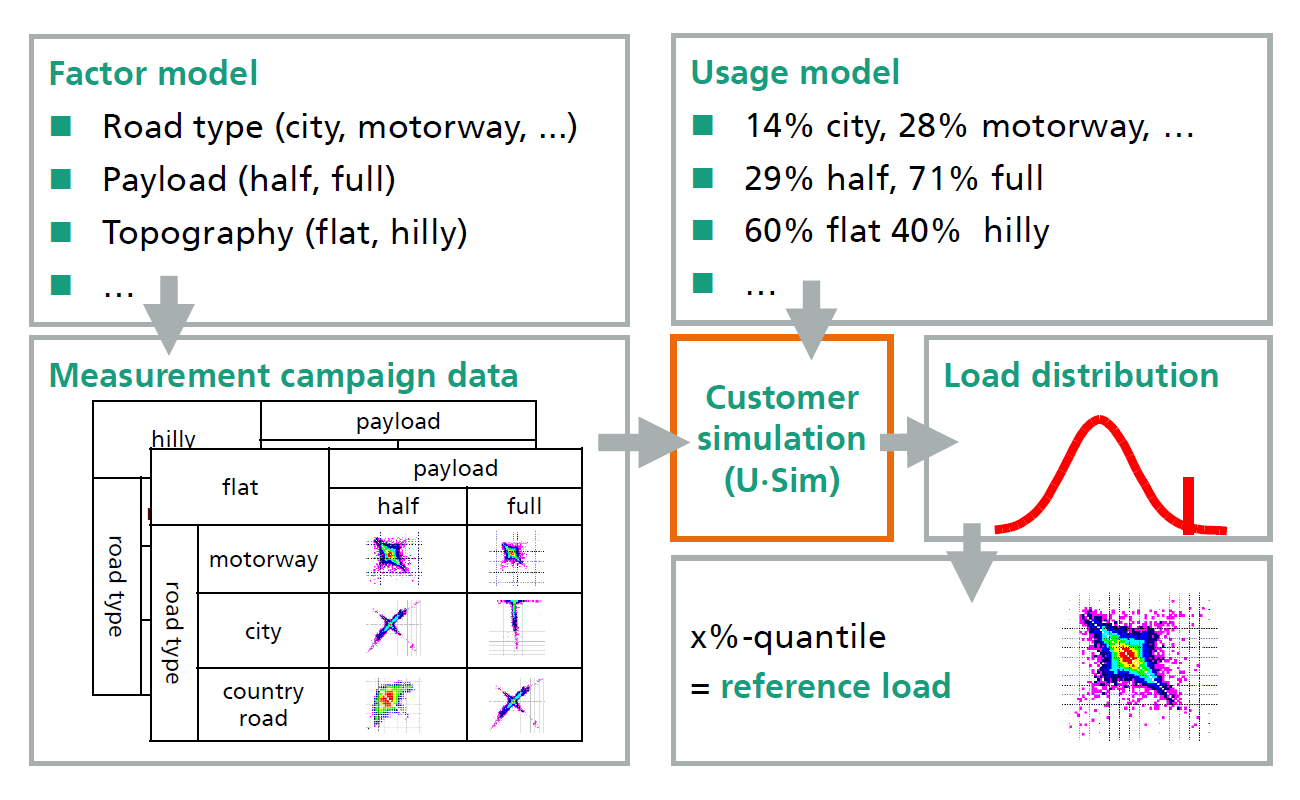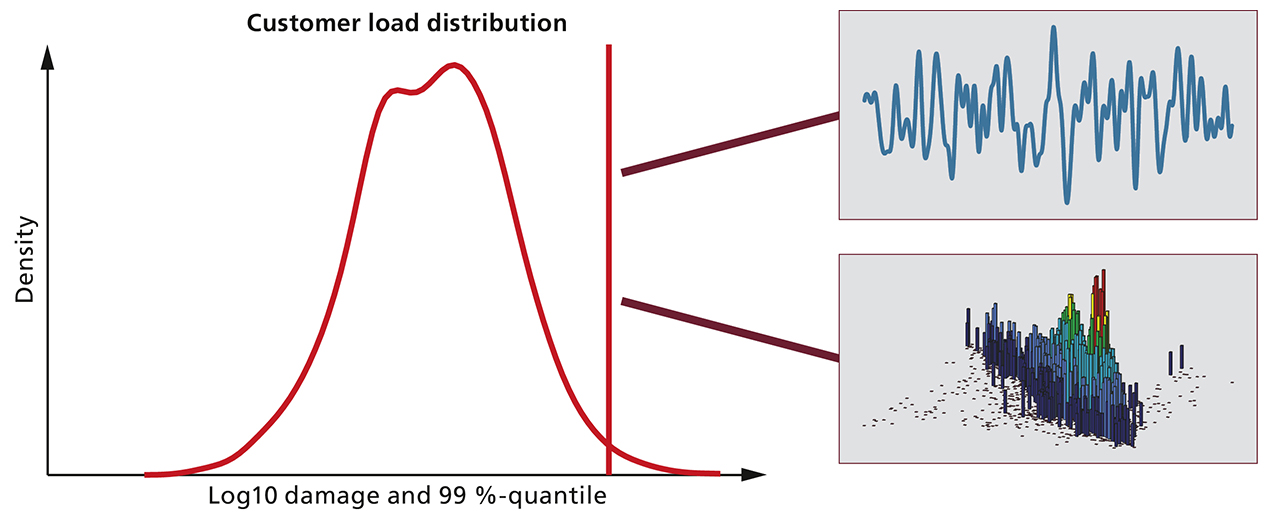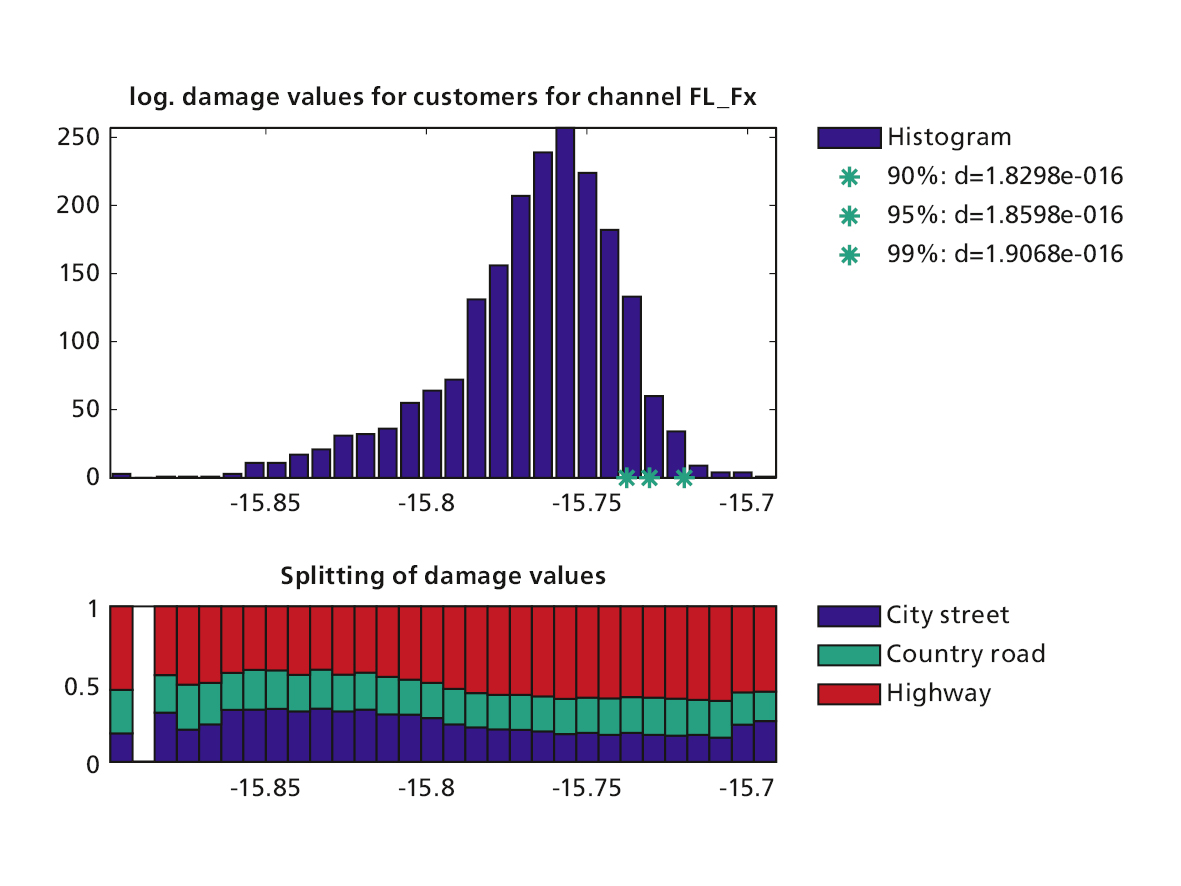U·Sim (Usage-Simulation) is the central tool within the process of deriving customer-oriented load distributions and design loads. Similarly, it can be applied to the analysis of energy efficiency (consumption and emission).
It combines a model for:
- usage variability: Which operating states occur how often in a group of vehicle users?
- load data: A couple of load observations, measured in each operating state to determine a load distribution for this group of users.




